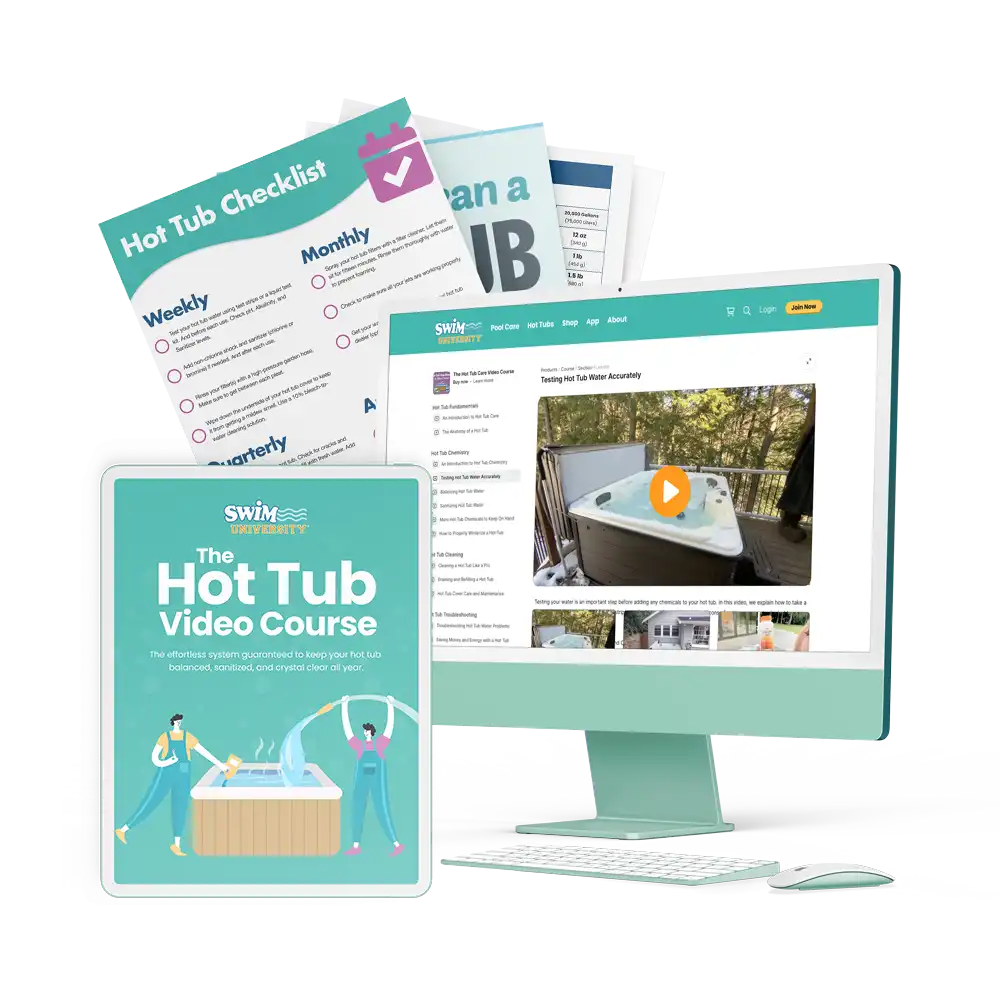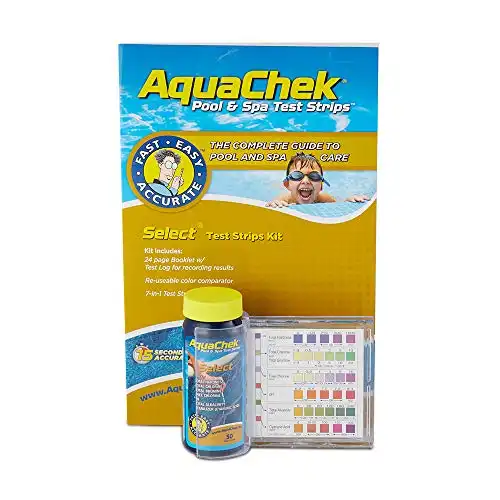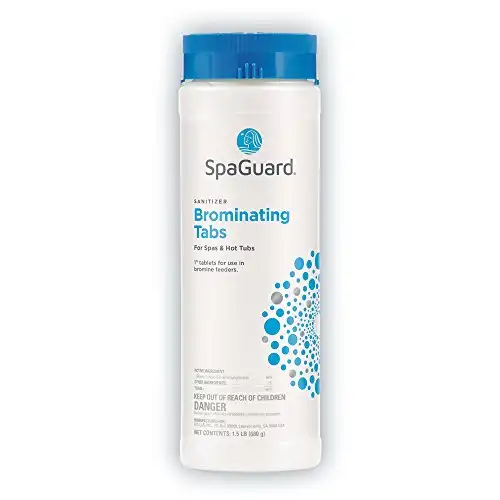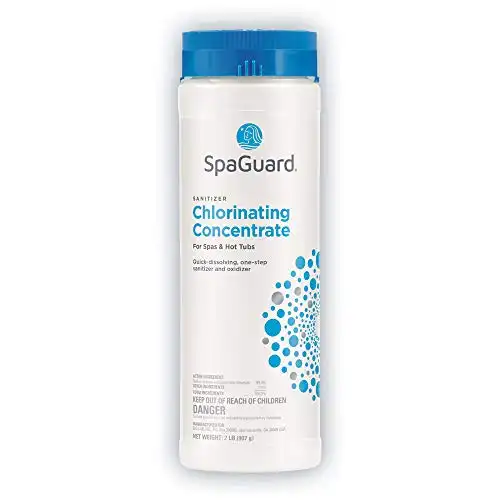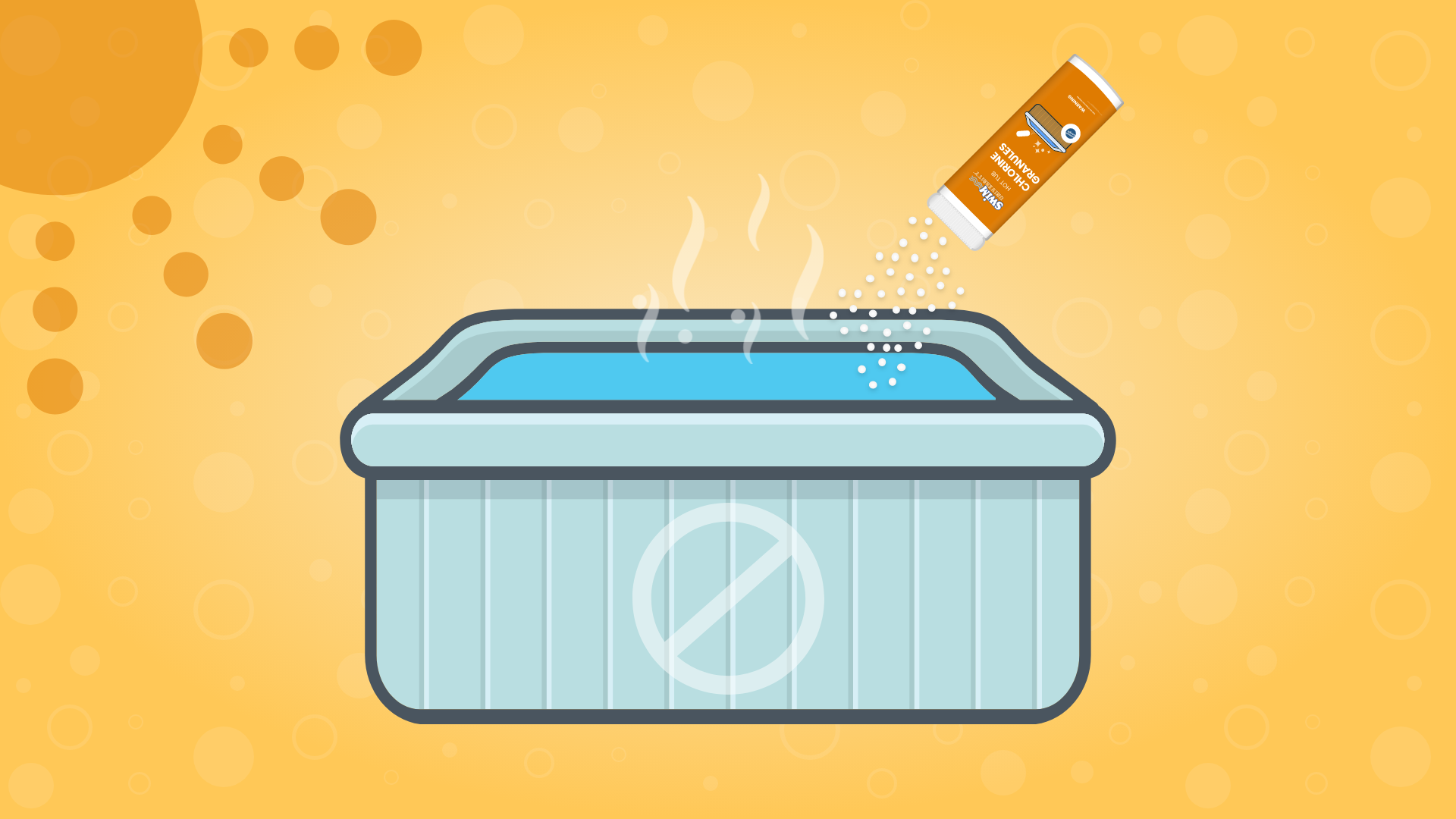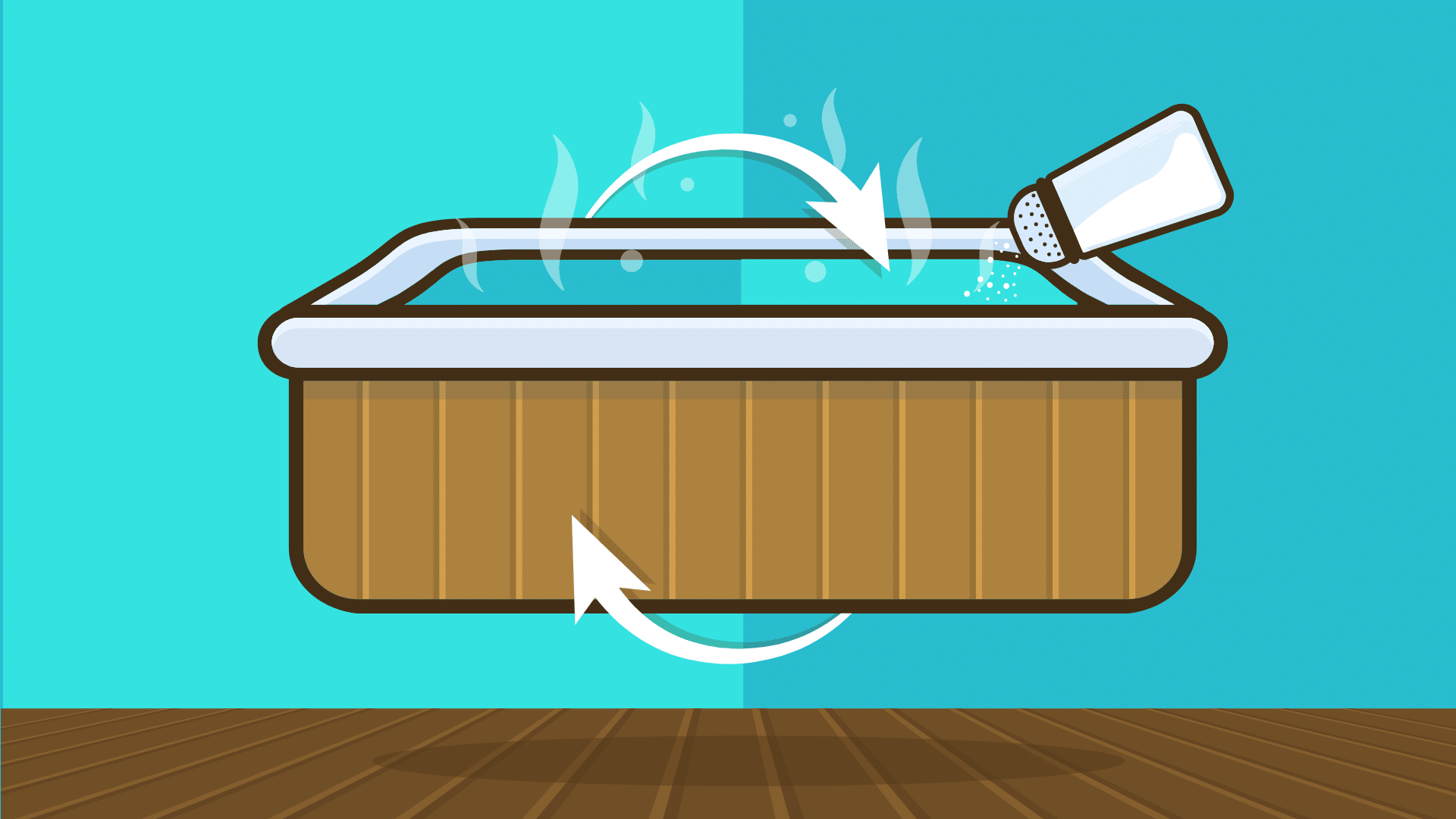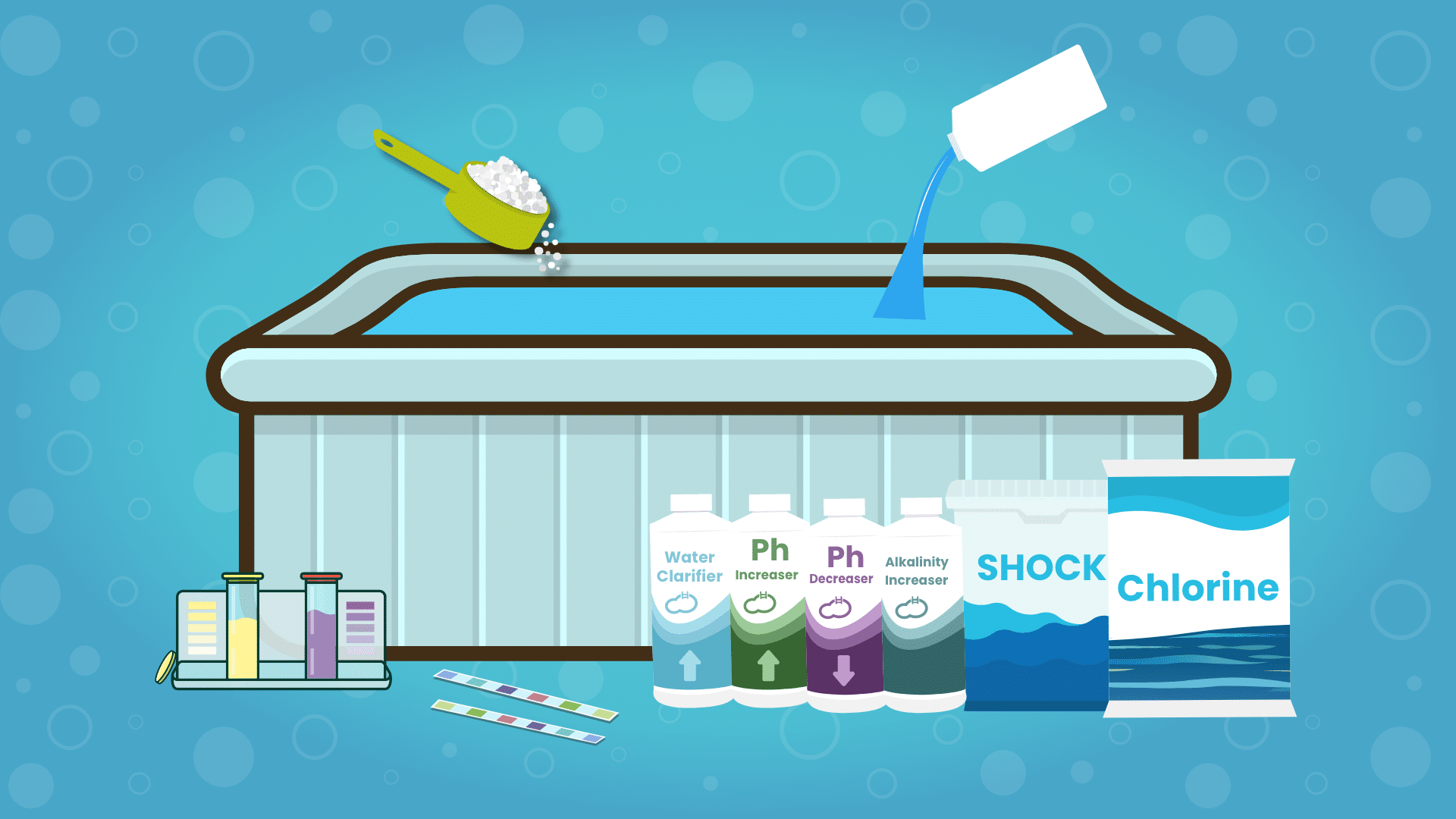Bromine vs. Chlorine: How to Choose The Right Hot Tub Sanitizer
Which hot tub sanitizer should you use? Chlorine or bromine? What about adding a second option, like minerals or salt water? To make this decision and keep your hot tub clear, you need a little knowledge about both sanitizers and how to add them to your hot tub. Watch the video below or keep reading for a quick comparison of bromine vs. chlorine hot tubs.
My fool-proof system for keeping any hot tub clean and clear at all times. Our course covers every type of hot tub, including portable spas, inflatable hot tubs, inground hot tubs, swim spas, and more. This is the LAST and ONLY hot tub guide you'll need.
Chlorine is the most common sanitizer for swimming pools. Bromine is used to sanitize hot tubs and indoor pools more often and with good reason. If your hot tub is indoors, bromine will be the better option.
Simply put, bromine doesn’t have a strong chemical smell like chlorine does. It’s why bromine is preferred over chlorine for indoor pools and hot tubs. However, chlorine is much easier to use and cheaper.
Fun fact: chlorine and bromine are cousins. For you chemical nerds out there, they’re both part of the Halogen family on the periodic table.
Chlorine vs Bromine: How They Work to Sanitize Spa Water
Chlorine and bromine are water sanitizers. They kill bacteria and other yucky stuff. But exactly how do these two sanitizers do that?
How Chlorine Works
It oxidizes contaminants by invading them and destroying them from the inside out. The chlorine dissipates and turns into a waste product called chloramines. We refer to these as “dead chlorine” or “used chlorine.” These remnants are responsible for the stinging, drying, stinky reputation chlorine has and reduce the sanitizer’s effectiveness.
To keep chloramines at bay, you’ll need to add chlorine on a regular basis, usually at least once a week. If it gets really bad, though, you can shock your hot tub to get rid of chloramines. You want to do that on a regular basis to keep your water clear and pristine.
How Bromine Works
It ionizes contaminants, forcing apart their chemical bonds. A good amount of it remains active and working, even after combining with contaminants.
But bromine also produces a waste product called bromamines. While they’re not as noxious as chloramines, they still reduce the effectiveness of the bromine in your hot tub. Shocking is also the solution here.
Which is The Most Effective Sanitizer?
The measure of a sanitizer’s effectiveness is its reactivity rate. This refers to how quickly it destroys contaminants.
- Chlorine: Kills contaminants more quickly than bromine does.
- Bromine: It’s a reactive element, though not as reactive as chlorine. So it kills slower than chlorine.
Note: Bromine also has a low pH. It can help keep your overall water chemistry more balanced, which means less adjusting.
Which One is The Best Sanitizer?
Chlorine works fast. But bromine is more stable, especially in warm water and high temperatures.
- Chlorine: Dissipates more quickly than bromine. It needs to be replaced more often.
- Bromine: Kills bacteria in your spa for a longer period of time than chlorine.
The exception to this rule is ultraviolet (UV) light from the sun. It’ll destroy bromine faster than chlorine. This is a concern if you have an outdoor hot tub. It makes using your hot tub cover more important.
How Much Chlorine or Bromine Do You Need to Add?
To get the most from any sanitizer, you need to use enough to work with how much water your hot tub holds. Then, test the water to find the current ppm (parts per million) levels.
- Chlorine: The ideal chlorine level is 1 ppm to 3 ppm, with 3 ppm being ideal.
- Bromine: The ideal bromine level is 3 ppm to 5 ppm, with 5 ppm being ideal.
If you end up with too much chlorine in your hot tub, you can try a few things to lower the levels. You don’t have to start over with fresh water. The same goes for bromine.
You’ll need to use a larger dose of bromine than chlorine to achieve the same sanitizing results, and bromine costs more than chlorine. But because you don’t have to use it as often, it’s possible that the cost may turn out to be the same. That also depends on the size of your hot tub and how well you keep the water clean and the pH level balanced.
Tests for 7 important chemistries in seconds: Total Hardness, Total Chlorine, Total Bromine, Free Chlorine, pH, Total Alkalinity, and Cyanuric Acid.
What’s Easier on Skin, Bromine or Chlorine?
The hot tub chemicals you use are all safe in the proper amounts. But some people may react differently to them.
- Chlorine: It can be harsh on the skin, hair, and eyes, especially at too-high levels. Also, when chloramines linger in the humid air around a spa, they can cause breathing difficulty and even trigger asthma attacks.
- Bromine: It is gentler on your skin than chlorine but can be a bit more difficult to wash off after a long soak.
If you or anyone who uses your hot tub on a regular basis has sensitive skin or any kind of upper respiratory difficulties, bromine will likely be the better choice.
These slow-dissolving tablets are compatible with both brominators and floating dispensers, ensuring a steady release and long-lasting defense.
How to Use Chlorine and Bromine Granules (Most Common)
Using a measuring cup, you can add chlorine granules or bromine granules to your hot tub. When you buy these versions, make sure they’re made for hot tubs. Chlorine and Bromine granular’s main active ingredient is sodium dichloro-s-triazinetrione. But we just refer to it as “dichlor.” Bromine granules contain about 10% to 20% sodium bromide.
- Determine your hot tub volume, or how much water it holds.
- Turn the hot tub on, if it isn’t already running, with the jets on low.
- Turn off any air valves that increase bubbles and jet pressure.
- Read the instructions on the chlorine or bromine container carefully.
- Measure the amount of chlorine or bromine recommended by the manufacturer for your hot tub’s volume.
- Pour the granules slowly and directly into the hot tub.
- Allow the water to circulate for 20 minutes to allow the sanitizer to disperse.
- Test the water with test strips or a test kit to ensure proper sanitizer levels. Make adjustments as necessary.
Easy to add chlorine to your hot tub with granules (powder) and a cap that's perfect for measuring the amounts you add.
How to Use Chlorine and Bromine Tablets
You don’t have to add these as often as granules. But the tablet form is still not completely a set-it-and-forget-it method.
- Read the instructions on the chlorine or bromine tablets container carefully.
- Place the recommended number of tablets (usually 1-inch tablets) into a feeder. This goes by many names, including a floating dispenser (also called a floater, chlorine/bromine float, chlorine/bromine dispenser, chlorinator, or brominator).
- Adjust the feeder (if it’s adjustable) according to the manufacturer’s directions to control the release of sanitizer.
- Hold the feeder under the hot tub water for a few seconds to push the air out and keep it more stable while it floats.
- Test the water over the next couple of days to ensure proper sanitizer levels. Make adjustments as necessary.
40% Thicker Walls, 7-inch Large Chlorine Dispenser For Inground and Above Ground Swimming Pool, 2 Year Warranty (For 3-inch Chlorine Tablets).
Frequently Asked Questions about Sanitizing Your Hot Tub with Chlorine or Bromine
The choice between chlorine and bromine tablets and granules should be a lot easier now. But if you still have questions, we did our best to answer them.
Do you need to shock a hot tub if you use bromine?
Yes. You need to shock chlorine, bromine, and saltwater hot tubs. For all three, you can use the same type of shock. It can be either non-chlorine shock or chlorine shock. Yes, you can use chlorine shock in a bromine hot tub. We recommend avoiding bromine shock altogether. Click here for more information on how to shock a hot tub.
Can I mix chlorine and bromine in a hot tub?
- DO NOT mix them together in the hot tub water. This can also cause a dangerous chemical reaction. If you’re going to switch from one to the other, you’ll need to drain and clean your hot tub, and do a line flush.
- DO NOT mix them together in their dry state, especially the granule forms. This can also cause a dangerous chemical reaction.
- DO NOT store them next to each other. Even in their separate containers, this is dangerous as the fumes they give off can combine and become combustible.
- DO NOT use the same feeder for both, whether you use chlorine or bromine tablets or granules. Even if you think you’ve cleaned it well enough, some of the chemical remnants can react with each other.
Is salt water or bromine better for hot tubs?
A salt water hot tub is sanitized with chlorine. The salt in the water passes through a generator built into the plumbing system that turns salt into chlorine. The benefit of sanitizing with salt water is that you don’t have to add chlorine manually. The hot tub automatically creates chlorine when it needs it.
Can you switch from bromine to chlorine in a hot tub?
Yes. Just make sure you drain and clean your hot tub first. Then, fill it with fresh water before adding in the new preferred sanitizer.
What’s the best sanitizer to use in a swim spa?
Swim spas are large bodies of water that are normally outside. We recommend using chlorine in a swim spa.
3 More Ways We Can Help With Your Hot Tub
- Hot Tub Cheat Sheets (Free): Easy-to-use guides to help you keep your hot tub water balanced and sanitized.
- The Hot Tub Handbook: An illustrated guide to DIY hot tub care, including water chemistry, maintenance, troubleshooting, and more.
- The Hot Tub Care Course. You’ll get step-by-step videos and a step-by-step downloadable guide with everything you need to know about hot tub maintenance.

